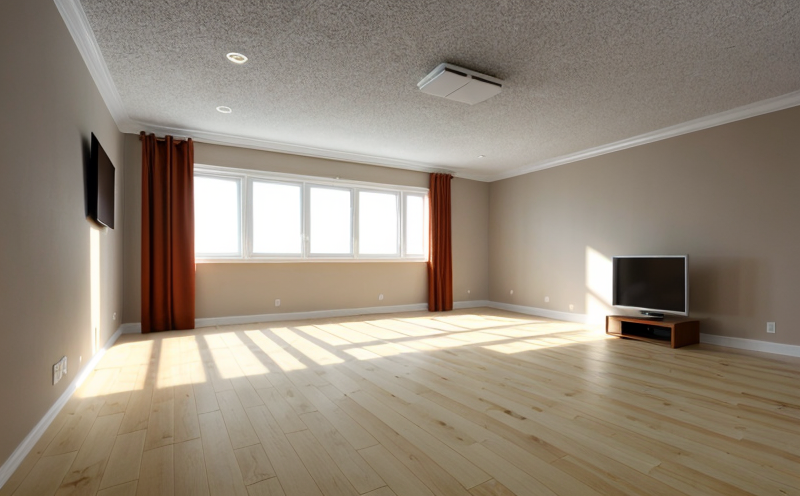EN 12354-2 Building Acoustics Calculation of Impact Sound Insulation
The EN 12354 series is a European Standard that covers various aspects of building acoustics, including the calculation and measurement of sound insulation for both airborne and impact sounds. This particular part, EN 12354-2, specifically deals with the calculation of impact sound insulation in buildings.
Impact sound insulation refers to the reduction of sound transmitted through a floor covering when footsteps or similar impacts occur on one side of a partition. The standard provides a method for calculating this sound insulation by measuring specific parameters and applying predetermined formulas. This approach ensures consistency across different environments, materials, and construction methods.
The calculation involves several key steps:
- Identifying the type of floor covering (e.g., carpeted or uncarpeted).
- Determining the weight per square meter of the floor covering.
- Measuring the impact sound level in a reference room using a specific measurement procedure.
- Applying a correction factor based on the type of floor covering and its weight.
The results are expressed as the Sound Reduction Index (SRI), which quantifies the effectiveness of sound insulation in decibels. Higher values indicate better performance. Compliance with EN 12354-2 is crucial for ensuring that buildings meet acoustical standards set by local regulations, thereby enhancing occupant comfort and privacy.
Accurate calculation using this standard ensures that architects, builders, and construction professionals can make informed decisions about materials and design choices. It supports the creation of quieter environments, which are increasingly important in densely populated urban areas.
Applied Standards
| Standard Code | Description |
|---|---|
| EN 12354-2 | Building Acoustics - Calculation of Impact Sound Insulation |
| ISO 717-1 | Sound Reflection and Diffraction - Part 1: Basic Methods for Laboratory Measurements on Flat Surfaces |
The application of these standards ensures that the calculations are consistent, reliable, and compliant with international best practices. Compliance with EN 12354-2 is particularly important in Europe but also recognized globally due to its rigorous methodology.
Eurolab Advantages
At Eurolab, we offer comprehensive testing services that are designed to meet the highest industry standards. Our team of experts has extensive experience in acoustics and vibration testing, ensuring accurate and reliable results every time.
- Accurate Measurements: Using state-of-the-art equipment calibrated according to international standards, we provide precise measurement capabilities for impact sound insulation calculations.
- Comprehensive Reporting: Our reports are detailed and include all necessary data points, allowing clients to make informed decisions quickly. This includes the Sound Reduction Index (SRI) and any applicable corrections or adjustments made during testing.
- Expertise in Compliance: With years of experience working with building acoustics standards like EN 12354-2, our team ensures that all tests are conducted in strict adherence to the requirements set forth by these regulations.
We understand the importance of timely results and strive to deliver them efficiently without compromising on quality. Our commitment to excellence guarantees that your projects will meet or exceed all relevant acoustics standards, contributing positively to both the built environment and user comfort.
Environmental and Sustainability Contributions
- Better Indoor Environment: By ensuring that buildings adhere to strict sound insulation standards, we contribute to creating healthier living spaces with reduced noise pollution.
- Energy Efficiency: Quieter environments can lead to more efficient use of heating and cooling systems as there is less need for constant ventilation or air conditioning to mitigate noise issues.
- Social Benefits: Reduced noise levels contribute significantly to improved quality of life, particularly in densely populated areas where quiet spaces are at a premium.
The focus on acoustics within the built environment aligns closely with broader sustainability goals. By promoting quieter, more comfortable interiors, we help create sustainable communities that thrive in harmony with their surroundings.





